A LATIN/MEXICAN HERB & SPICE GARDEN – Part 3: More Herbs
More Flavors from the Kitchens of Mexico, Central America, South America, and the Caribbean

Part 3 of 3
This week’s version illustrates two things: even more influence on Latin American cuisines from European plants, and a whole bunch of confusion in names, especially about what is a native American (Western Hemisphere) plant and why is it often called by a European (Spanish) appellation. Bear with the wealth of common names herein; I’ve gone a bit crazy.
As with parts 1 and 2, these are the herbs we can grow in our gardens in the U.S. (as well as the many appropriately-climate-friendly parts of the U.K., Ireland, Europe, Australia, and even New Zealand). Hello distant cousins.
One general growing note for virtually all these herbs: they must have perfectly draining soil and water only during active growth (roots in fall, foliage in spring). They easily rot in soggy soils and with too much (any?) summer watering. “Zones” refers to the USDA agricultural/horticultural zoning system (which has been “translated,” in various forms, for UK, European, and Australian gardeners).
LET’S START WITH OREGANO, OR SHOULD I SAY ORÉGANOS? A NIGHTMARE OF NAMES.
No doubt at least some Latin cooks and chefs in the U.S. use Greek oregano (the common oregano in U.S. kitchens) in Latin dishes that call for “oregano.” At least sometimes. I’m sure, too, that even more often, they use marjoram instead of oregano in dishes that spell out “oregano” among the ingredients (and there’s a reason for that).
Once we cross the border to our south, Greek oregano is uncommon to rare to completely absent. In its place are a host of other oreganos.
All of the non-Greek oreganos here have two aromatic oils in common with the herb long harvested by the Greeks: carvacrol and thymol. These aromatic oils provide the characteristic “oregano” fragrances and flavors. The oils aren’t just found in Greek oregano and the non-Greek oreganos; you’ll find them (and their basics flavors) in marjoram, Syrian hyssop, various thymes, and even rosemary, all of which have been called “oregano” by someone, somewhere, some time.
It seems the common names of marjoram and oregano (both species of Origanum), as well as thyme and almost anything else with some combination of the flavoring oils carvacrol and thymol, started their etymologies with the word oregano or some ancient root of that. That “root” was taken by the Spaniards and possibly the Portuguese (who use orégãos) to distant lands and where they couldn’t find their native version of oregano (whether it be actual species of Origanum or a species of Thymus or who knows what else), they gave that name to anything that had those same flavors (the carvacrol and thymol oils; usually along with supplemental constituents).
Dr. Arthur O. Tucker, author of over 400 scientific and popular publications on herbs including “The Big Book of Herbs: A Comprehensive Illustrated Reference to Herbs of Flavor and Fragrance,” may have said it best with “it’s best to think of oregano as a flavor rather than a genus or species.”
-
Let’s start with a species of Origanum that is an oregano but not…
MARJORAM (majorana or mejorana) (Origanum majorana) Hardy and perennial in Zones 9 and 10. A mellower Origanum – sweeter, less pungent, less “spicy” than oregano. It also has the slightest hint of pine (a good thing, especially with fatty foods). This last hint of flavor comes from a third oil: cedrol.
“El libro de la cocina Mexicana” (a respected book on food and culture) says fresh thyme, sweet marjoram, and oregano are the perfect trilogy for a balanced flavor in many Mexican dishes. Together, the three are the mix called hierbas de olor (herbs of aroma) with their stems tied into bundles called the manojo de hirbas de olor (literally, handful of fragrant herbs; akin to a bouquet garni). Or the mix is contained in a cheesecloth packet (a la sachet d'épices; in which case it might also include even more aromatics such as cinnamon/canela, garlic cloves, black peppercorns, and/or whole allspice berries). Both the bundle and the package are used in countless recipes for soups and stews, as well as in tinga poblana (pulled pork; a stew cooked in a chipotle and tomato sauce) and barbacoa (beef, lamb, goat, or pork traditionally cooked in a pit in the ground).
By itself, marjoram is still an important herb in Mexican cuisine. It’s a very common marinating ingredient, fundamental to cebollas (onions) and zanahorias y chiles encurtidos (marinated vegetables that grace the tables at many Mexican restaurants — the doctored up version of what most of us know as jalapeños en escabeche).
A similar mejorana (marjoram) is pot marjoram (Origanum onites). The “pot” part comes from the archaic term “potherb,” which refers to plants whose leaves or stems are boiled and eaten as a vegetable or used as a flavoring. This species is also called “Cretan oregano” and “Turkish oregano.” So, there it is, it is an oregano. Or not.
When it comes to buying marjoram (and Origanum vulgare subspecies hirtum) from a nursery, buy vegetatively-propagated plants, not seeds. And even when you see both plants in the nursery, take a leaf off both and compare them.
Marjoram is an annual in northern gardens and a decent perennial in southern climes. Something in between an annual and a perennial in gardens that are, well, in between. Needs all-day sun and minimal water in summer, it’s natural dry season.
OREGANO (orégano) (Origanum vulgare subspecies hirtum; or O. heracleoticum, a botanical name of no standing). The oregano with probably the widest range of climate adaptability: from Zone 4 to 10, inclusive. The common oregano of American kitchens. This particular subspecies goes by the more common name of Greek oregano but it even claims the name Italian oregano. It’s also sometimes called “wild marjoram;” and that, as mentioned above, is part of the naming and cultural confusion.
Oregano is herbaceous, earthy, tangy, and a bit spicy/peppery. It also has bitter and minty notes, with a hint of mustiness and hay. This is due to the combination of its various essential oils, the most common of which, besides that thymol and carvacrol, are pinene and limonene. There’s also a bit of cineol, the same oil that’s in camphor (and some people taste it).
Some cooks, especially the Latin cuisine specialists, feel that it is too intense and can easily overpower other ingredients in a dish. Pro culinary tip: To combat this tendency, use fresh oregano whole but remove it from the dish before serving. Pro tip 2: Infuse oil, either cold or hot, with oregano, and it will assume the oregano flavor but not the bitterness.
Pro tip 3: Use dried oregano instead of fresh; oregano is a bit of a rarity in that its dried form is often less pungent than fresh. Because Latin cooks/chefs aren’t crazy about this oregano’s pungency, they will use the dry form when their native oreganos aren’t available. U.S. cooks take note: for Latin cuisine, use dried oregano when the recipe calls for it and it’s all you have.
It is essential to pozole (hominy chowder), as well to many tomato-based dishes, most notably huachinango a la Veracruzana (red snapper in a sauce of tomato, onion, garlic, olives, capers, fresh parsley, bay leaves, olive oil, pepper, salt, and oregano of choice) -- when Mexican oregano isn’t at hand.
Special Pro tip 4: For Italian food (in a sense, the original “Latin”), use Origanum x majoricum, the “Sicilian” Oregano, a hybrid between Greek oregano and marjoram (don’t be confused by the botanical names O. x majoricum versus O. majorana; see the difference?). It’s the flavorful yet mellower oregano. Or just use marjoram.
For the garden, buy oregano as vegetatively-propagated plants. Plant in full, all-day sun in well-drained lean soil on the dry side. Trim after flowering to keep the plant bushy.
MEXICAN OREGANO (orégano) (Lippia graveolens; L. berlandieri and L. origanoides are synonyms). It is also called orégano cimarron or hierba dulce, wild oregano or sweet herb, respectively. Hardy in Zones 9 through 11; but it is so fast growing that it can be cultivated in virtually any climate as an annual (which dies with the first frost).
There are many plants known as "oregano" in Mexico but this, Lippia graveolens, is the most common. This one is the preferred orégano of Mexico’s kitchens.
Native to Coahuila, Veracruz, and Oaxaca. This orégano has the same basic terpenes as Greek oregano, albeit on a smoother level, but it also comes with hints of mint and anise and a slight citrus twist. It’s less sweet, smells and tastes more earthy and plant-like, with an almost bay leaf/umami finish. It lends balance to woodsy Mexican spices such as allspice and cinnamon and heightens the citrus flavors so prevalent in Mexican dishes. Turns out, though, there are regional variations in flavor; disjunct ecotypes?
These built-in flavors go wonderfully with bean dishes, chile pepper-centric dishes, ground meats, onions, garlic, cumin, and paprika. Sounds like the ingredients of a chile colorado or chile verde (“chili con carne”) or even the familiar chili (as in the stew) found in the U.S.
It’s almost always used in its dried form in adobos, broths, marinades, and consumes of all types, along with being a key element in pozoles (hominy stews/soups), menudos (tripe stews), chicken stews, escabeches (pickled onions/chiles, and sauces including moles. More matches: tinga de pollo (shredded chicken in a spicy, smoky tomato and chile sauce), pescado a la veracruzana, (fish prepared in the style of Veracruz), most bean dishes, and braised meats such as carnitas. It’s also a good substitute in salsas and guacamole for those who don’t like cilantro.
Another “Mexican oregano:” Lippia palmeri. The Seri call the shrub xomcahiift and use the leaves as a culinary herb. The Seri (or Comcaac people) are a strongly independent Indigenous group of the Mexican state of Sonora.
People in Puerto Rico use Lippia micromera (which is also used in Jamaica, the Dominican Republic, and parts of Central America). Called Jamaican Oregano but is sometimes known as False Thyme and Spanish Thyme. The long list: Dominican oregano, Caribbean oregano, Mexican oregano (again?!), Puerto Rican oregano, false oregano, petite thyme, orégano del pais, orégano poleo, orégano chiquito, oregato and oreganillo. Confusing, huh?
Fresh or dried leaves of Jamaican Oregano are a traditional spice in Caribbean cuisine. It is used in the same wide ways as Greek Oregano, but it's taste and aroma is more intense and richer. It is used for meat or fish dishes, stuffings, stews, soups, and salads. To prevent its aroma and flavors evaporating with the steam, add it in the last minutes of cooking.
Lippia micromeria grows best in sunny dry soil.
A related “oregano:” Hedeoma patens has one of the Spanish common names used by Lippia graveolens: orégano chiquito (“small oregano”). It’s native to the Mexican states of Chihuahua and Coahuila.
MEXICAN OREGANO (orégano) (Poliomintha bustamanta; synonym: Poliomintha longiflora). Also called orégano Indio, oreja de raton (mouse's ear), and orégano suave (smooth oregano). A quite ornamental evergreen, upright shrub hardy in Zones 7 (possibly root hardy in colder areas) to 10.
While Lippia graveolens is sweet and grassy-citrusy, this plant is strong, minty, and earthy . Poliomintha is used similarly to Lippia, particularly in guisos (stews).
A similar Mexican Oregano, one little used outside its native range of Coahuila, is Poliomintha maderensis. This Mexican Oregano (also called Lavender Spice, Madrean Rosemary, Rosemary Mint*) is a shrub with a woody base. It blooms with tubular purple flowers (yes, hummingbird attractant) that are lavender scented. Once established, it requires very low water, but the flowers are more profuse with supplemental water during blooming season. Great landscape plant for dry climates, including desert. *And would you look at all those names?
Both are grown in lean soils in full, all-day sun.
CUBAN OREGANO (orégano) (Coleus (Plectranthus) amboinicus). Also called MEXICAN-MINT, the latter common name being preferred in the US (but not to be confused with the other “Mexican Mint” Marigold, below, Tagetes lucida). Botanically, it was once a Plectranthus, then a Coleus, then a Solenostemon, then a Plectranthus, and now back to Coleus. Those botanists!! Zones 10 and 11. THIS is the “thyme, oregano, mint, gwo ti te” pictured at the top of this article.
As for common names in Latin American countries, besides Cuban oregano and Mexican-Mint, gwo ti te (Creole), big thyme (Grenada, West Indies), oregano brujo (witch oregano; in Puerto Rico), orégano francés (in Cuba), pudina (in Trinidad and Tobago, Guyana and Suriname by the Indian population), orégano orejón (big-ear oregano), orégano oaxacaqueño (Oaxacan oregano), and, whew, orégano poleo (pennyroyal oregano).
In other parts of the world (it’s circumtropical in cultivation), it goes by the names of allherb, broad leaf thyme, carom plant, country borage, French thyme, Indian borage, Indian-Mint, mother of herbs, poor man pork, queen of herbs, soup mint, Spanish thyme, thick-leaf thyme, three-in-one herb, and vattelao (in Goa, India). Double whew! It’s native to Southern and Eastern Africa, (from South Africa [KwaZulu-Natal] and Eswatini to Angola and Mozambique and thence north to Kenya and Tanzania) as well as the Arabian Peninsula and India.
Its flavor is more earthy and citrusy. Sliced thin and added fresh to salsas. Often used as a substitute for oregano to subdue the strong odors and flavors of fish, mutton, and goat.
This plant is the most unique looking of the oreganos. It’s a somewhat trailing succulent, related to the familiar indoor somewhat-succulent plant known as Creeping Charlie or Swedish Ivy (formerly Plectranthus australis, now Plectranthus verticillatus [Plectranthus nummularius]).
Coleus amboinicus is a fast-growing plant commonly grown in gardens (Zones 10 through 12) but mostly indoors in pots (everywhere). In dry climates, it grows easily in a well-drained, semi-shaded position. It does well in cooler climates if grown in a pot and brought indoors, or moved to a warm, sheltered position in winter. Just as with Swedish Ivy, this species is easy from cuttings.
For eating, it can be harvested throughout the growing season to be used fresh, dried, or frozen.
CAUTION: Coleus amboinicus species can be safely consumed by humans but is toxic to dogs, cats, and horses.
-
Just for fun, and before I leave oreganos, I might as well throw in one more: Brickellia veronicifolia (Veronica-leaf Brickellbush), commonly called majorana and orégano, as well as orégano del campo, orégano del cerro, orégano del monte, gobernadora, peistón, pestón, pexto, pextón, and quebradora. It’s rare in Texas (the only place in the U.S. to be found) but widespread across Mexico.
Altogether, I found about two dozen species of plants native to Mexico alone, that have been called oregano or orégano and used to flavor foods.
-
Okay, done with oréganos…
PÁPALO, YERBA POROSA (Porophyllum ruderale). Annual everywhere. Known by many names, including Bolivian coriander, quillquiña (also spelled quirquiña or quilquiña), yerba porosa, killi, tepegua, rupay wachi, mampuritu, pápaloquelite, and summer cilantro.
Its primary name, pápalo, comes from the Náhuatl papalotl or butterfly, due to its oval leaves which can measure up to two inches and pápalo quelite means edible butterfly. To some, papalo refers to just the leaves and papalo quelite includes the stems.
The taste has been described as somewhere in the vicinity of arugula, cilantro, and rue. To many, it tastes like arugula mixed with pepper and a bit of lemon. At least one food writer thinks it tastes like a mouthwash (which is kind of fitting, because it does help clean your mouth of oniony aftertaste); it’s that genetically-sensitive soapy cilantro thing. Some find that, whatever the flavor, it improves the taste of tacos, typical Mexican salsas (especially salsa verde), and soups.
Big time in Puebla, Mexico, otherwise not common in Latin American cuisine. Now found in U.S. markets. In Puebla it is used in several dishes, including as a flavoring on cemitas, THE sandwich that is very popular in this state. Here, most people eat it fresh in tortillas, sprinkled on guacamole and salads, and as a final touch to tacos. Although rarely cooked, it can be added to beans and stews, including American-style chilies (that meat and/or bean dish). It can be used as a substitute in recipes that call for cilantro, albeit in much smaller quantities. In some Mexican restaurants, stems of the herb are left in vases on the table and customers will take leaves to put on certain dishes.
Easily grown annual anywhere. In coldest gardens, start indoors, otherwise sow seed direct at the very beginning of the warm-hot season. Don’t let it flower – they kinda stink.
PARSLEY, ITALIAN FLAT-LEAF (perejil) (Petroselinum crispum var. neopolitanum). Best grown as a biennial in Zones 7 to 10; as a spring-sown annual in Zones 3 to 6. Petroselinum crispum var. crispum, the CURLY PARSLEY, is a fun bit of green on the plate and maybe training wheels for real parsley, but otherwise, don’t use it.
Perejil or parsley has similar uses to cilantro and looks almost the same. Many have taken home parsley instead of cilantro more than once. When no cilantro is in the pantry, use the parsley for at least garnishing.
The ingredients for Argentina’s famous meat topping chimichurri: garlic (the aromatics), olive oil (the binder), red wine vinegar (the tang), chili flakes (the hint of spice), oregano (see “Oreganos” above), salt and pepper (of course), and fresh parsley, which is the backbone of the sauce (although many use cilantro and/or culantro either as a total replacement or in part: see last week’s “Herbs and Mellow Spices”).
More information on parsley, culinarily and horticulturally, in the article “An Italian Herb Garden.”
PEPICHA (Pipicha) (Porophyllum linaria [P. tagetoides]) Other names chepiche, cola de coyote, and tepicha. Usually grown as an annual, especially in Zones 4 to 7; a short-lived perennial plant in Zones 7 and 8, usually grown as an annual; best chances of being a perennial for at least two years would be in Zones 9 to 11.
Has a flavor similar to cilantro, with notes of lemon and anise. Used in Mexican cuisine to flavor meat dishes, salsa verde, and corn and squash dishes. Adds flavor and color to rice and poached fish. It’s a key ingredient in the Oaxacan dish sopa de guias (a truly unique soup of baby squash, squash flowers, corn dumplings, whole corn kernels, vine shoots, and pepicha/chepiche). Pepicha is popular in nouvelle Mexican cuisine and becoming more so in high-end American-Mexican restaurants.
Grows tall and somewhat wispy (like tarragon) with very slender leaves. Grow in full sun to part shade. Can be grown in pots. To grow as an annual, sow seeds indoors in late spring; garden off and then put out after last frost.
SPEARMINT (heirba buena or yerba buena) (Mentha spicata*). Hardiness Zones 5 (maybe to 3) to 10. Spearmint is used in a variety of sweeter dishes, including aguas frescas (refreshing drinks), salads, desserts (including being added to chocolate candies), and, of course, hot teas. Savory-wise, it adds a special flavor to meat stews, cooked sauces and soups, and is especially prominent as an ingredient in traditional meatball soup, “albondigas,” where finely-chopped leaves are added directly to the meatballs. Something else distinctive to try: caldo de pollo con heirba buena (chicken soup with mint).
This mint is used in possibly the best known mint-forward culinary item in Latin America: the mojito. This luscious drink was originally created in Havana and along with it were created a dozen or so myths to bump up the marketing of this drink (a story in itself). There is a hybrid mint called Mentha × villosa ‘Mojito’, a cross between spearmint and apple mint, which is certainly used instead of spearmint.
The compound primarily responsible for the aroma and flavor of spearmint is L-carvone, a terpenoid. Made into an essential oil, L-carvone can be used as a decent mosquito repellent (versus using spearmint plants in pots on the patio, which are NOT tangible mosquito repellents).
* Botanical Note: I am not positive that spearmint (Mentha spicata) is the mint most commonly used in Latin America and finding exactly which “mint” is used in Latin cuisine is difficult. Especially when given the ambiguous common name of simply “mint,” it’s left me wondering which species might be applied here. Even my guess, Mentha spicata (Spearmint), is only a little more than a guess. And there’s a good possibility that several kinds of mints are grown in the huertas of Mexico and Cuba. Menta piperita (peppermint; menta), for instance, is used in Mexico much as is spearmint but probably not as regularly. Any Latinx ethnobotanists in the house?
Spearmint is an easy plant to grow, in fact it can become invasive and is best kept contained. A mint garden in pots outside the kitchen door is handy, but if you want to grow your spearmint in the ground then consider planting it inside a deep bottomless pot to prevent it from spreading too far. Container-grown mints need to be divided and re-potted in fall, which is an excellent opportunity to bring a pot inside for use during the winter. In the ground, give it all-day sun and keep it lean and on the dry side; not only will this intensify the flavor, it will minimize its stampeding tendencies.
Speaking of confusing names, in the western U.S., there is Satureja douglasii, whose common name also is yerba buena. This plant with its minty leaves can be used in tea, soups, stews, and desserts. Historically, this herb was used by indigenous communities ranging from British Columbia to Southern California. Maybe still is. But it is not found in Latin American cuisine.
MEXICAN TARRAGON, MEXICAN MINT (Tagetes lucida) Zones: 8 (maybe 7) to 10 and 11 with hot summers. Also called Spanish tarragon and winter tarragon. In Mexico, it is sometimes called estragon, the French word for tarragon. The French call it estragon du Mexique. In Latin countries, it is also called pericón, yerba anis, and yauhtli. “Yauhtli” is the Nahuatl (language of the Aztecs) word for “grass of the clouds,” “cloudy plant,” or contrastingly, “the dark one.” “Chocolatl,” the Nahuatl word for you know what, often included the leaves of this plant.
It’s commonly used to add flavor to soups, sauces, chicken dishes, and fish/seafood dishes. The flowers are used for garnishing or added to autumn salads and desserts.
Mexican marigold is an acceptable substitute for the hoja santa (Mexican pepper-leaf) in recipes where the pepper-leaves would be ground to a paste or puree, such as in mole verde. Since the Mexican tarragon is much sweeter, you may have to adjust dosage accordingly.
There is a related species Tagetes micrantha (licorice marigold) with similar flavor. It is a widespread annual plant across much of Mexico from Chihuahua to Oaxaca, and found also in the southwestern United States (Arizona, New Mexico, western Texas).
Tagetes lucida is a perennial ornamental herb in mildest zones but makes for a decent annual in coldest zones. As with everything else in this list, it prefers dry conditions (including being drought tolerant) but will also accept summer water/rain (hence why it is used in southeastern states, where it rains throughout summer, instead of tarragon, an essentially French herb requiring cool and dry conditions). Restaurants in the French Quarter of NOLA grow this to replace French tarragon in French recipes. One cultivar, ‘Sweetie’, is a uniform selection.
THYME (Thymus vulgaris) (tomillo). Zones 5 to 10. Commonly used in Latin cuisines.
Maybe reminiscent of oregano (same oils) but milder. It adds a bit more earthiness and a little spiciness with a hint of cloves, camphor, and mint. Although it blends well with other spices and herbs, a little bit goes a long way.
It's one of the classic hierbas de olor found across many Latin cuisines and used in a great variety of dishes, from marinades, stocks, and sauces to stews to chiles en vinagre (aka pickled jalapeños or escabeche). You can find it in barbacoa (slow-smoked/cooked pork or other meat), braised and roasted meats, chorizo, moles, vegetables, stuffing, rice, and potatoes.
It also goes well with chicken, lamb, soups, eggs, grilled fish, beans and other legumes, vinegars, and casseroles. Thyme is a good match for very fatty foods.
The word “thyme,” as you’ll see in reading this article, is also used commonly for several other plants.
Thymus vulgaris is one of the most commonly grown perennial* herbs in the U.S. It’s a low, mounding to trailing plant of easy care (probably why it’s so popular). It loves sun and a lean, well-drained soil. Water primarily in spring and fall; not so much in summer. Grow from vegetatively propagated plants, not seed. Can naturalize (get weedy) in garden settings it likes; mow the seeds off as they just start to form. (* technically, it’s a subshrub, which means its lowest stems become a bit woody.)
WACATAY, HUACATAY(A) (Tagetes minuta). Annual everywhere. Native to the Peruvian Andes and is used in Peruvian cuisine. It's also known as Peruvian black mint (although it’s not actually black), mint marigold, and wild marigold. Wacatay/huacatay is Quechua, the indigenous language family that originated in central Peru and spread to other countries of the Andes. In other regions, it is commonly called chinchilla, chiquilla, chilca, zuico, suico, and/or anisillo, and in English, it goes by Southern marigold, wild marigold, and black mint (still not black). In addition to Peru, it is used as a culinary herb by its neighbors in Ecuador, Chile, and Bolivia. It is commonly sold in Latin grocery stores in a bottled, paste format as “black mint paste.”
Huacatay has a unique flavor profile: a blend of spearmint (although not intensely minty), basil, citrus, and a touch of tarragon or anise, with a bright, herbaceous quality. Its complex, tangy taste is sometimes compared to cilantro, depending on the dish it's used in. One food writer compared it to bubblegum with a splash of mint (I don’t think so).
Peru has plenty of huacatay-centric dishes. Dried leaves are used as a seasoning and fresh leaves as a garnish for causa (any of many layered or stuffed potato dishes). Huacatay paste is used to make the popular Peruvian potato dish called ocopa (cooked potatoes covered with salsa huancaína, which is made of aji [see the chiles article, part 1 of this series], ground peanuts, and cheese, served with lettuce, boiled eggs, and olives and, of course, the huacatay paste). Now THAT is my kind of salad! Huacatay finds its way into ají de huacatay (a spicy salsa) and seco de Cordero (lamb stew), There is uchucuta (a spicy, sour sauce made with ground fresh chiles, herbs, and sometimes other ingredients such as tomatoes, peanuts, and/or cream; used on, or as a dip for, eggs, meats, potatoes, and more). It’s even blended into fruit juices.
It’s one of the most widely used herbs throughout Andean cuisine, giving flavor to countless recipes such as stews, grilled meats, and grilled vegetables. It’s infused into an oil, blended into a compound butter, and also be dried to be used as a tea.
Wacatay is a very easy summer annual anywhere, probably easier than common ornamental marigolds and requiring the same conditions and timing.
For those gardeners who practice crop rotation, this is also a great summer cover crop that not only produces biomass (for “green manure;” see this article: “Cover Crops: A Renaissance”), it is a proven trap crop and biofumigant where root-knot nematodes are an issue. [I need to do a story on trap crops for home gardens.]
-
This concludes this epic trilogy on Latin Cuisine for Gardeners. (That might have been a better title at the head, huh?) Even after more than six decades of gardening and 20 years of restaurant work (which included creating menus for Mexican restaurants), I’m still learning. Wacatay?!! Who knew.
-
If you missed parts 1 and 2 of this series:
“A Latin/Mexican Herb & Spice Garden – Part 1: The Chiles”
“A Latin/Mexican Herb & Spice Garden – Part 2: Herbs and Mellow Spices”
© Copyright Joe Seals, 2025




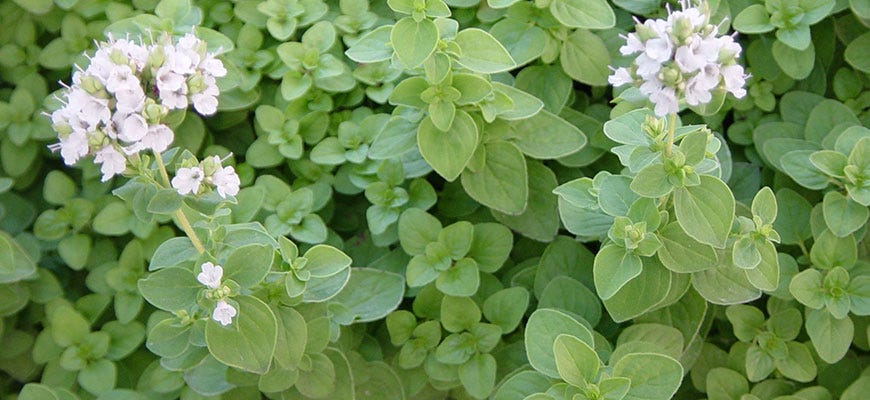
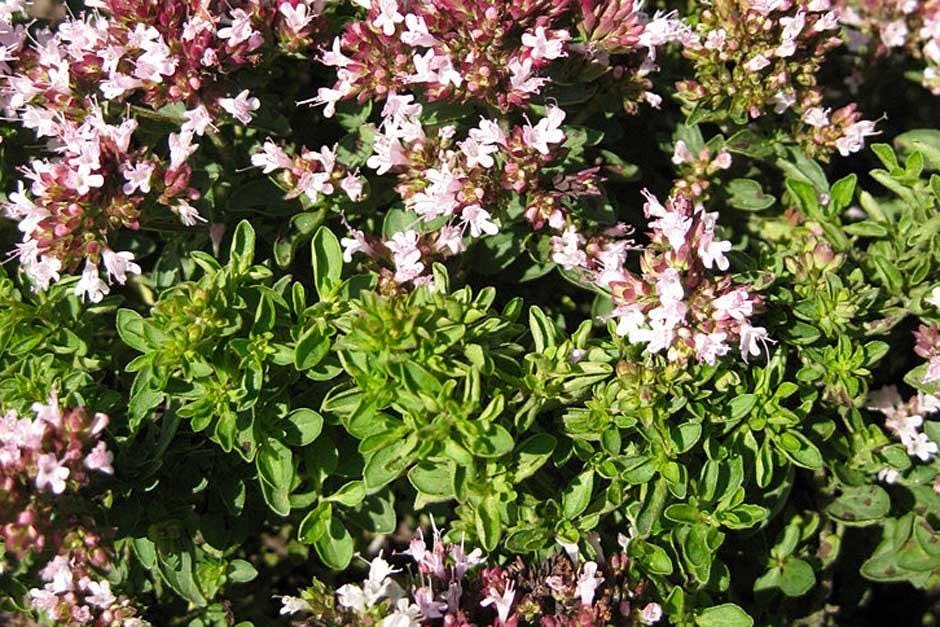
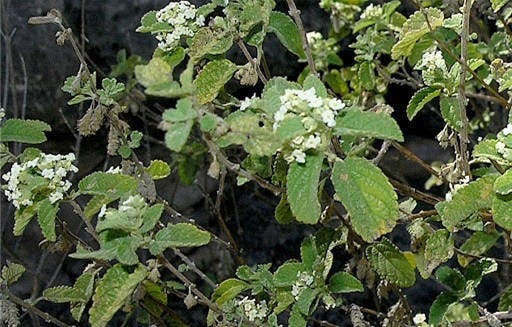

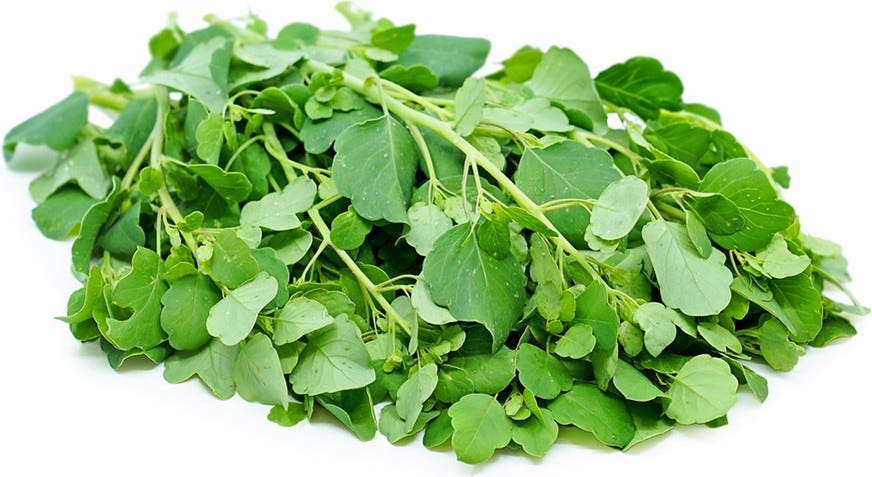
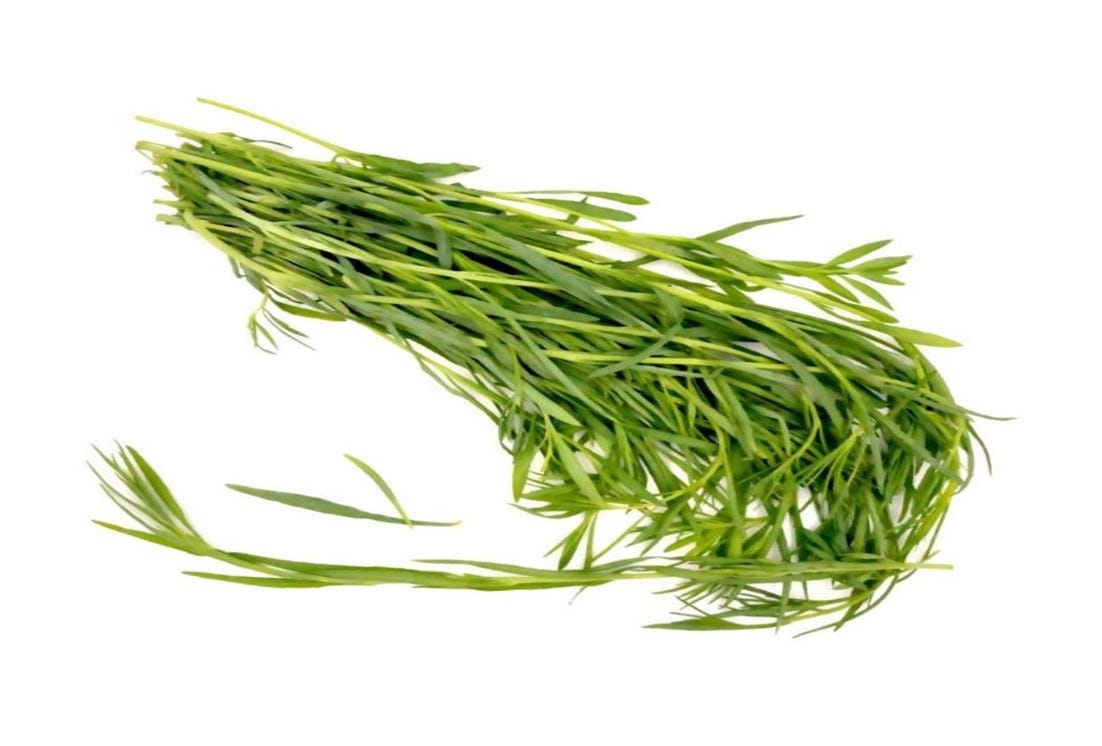


‘Big time in Puebla, Mexico, otherwise not common in Latin American cuisine. Now found in U.S. markets. In Puebla it is used in several dishes, including as a flavoring on cemitas, THE sandwich that is very popular in this state.’
This is so interesting. Alonso Ruizpalacios’ new film ‘La Cocina’, is set in the kitchen of a New York restaurant. The main character, an experienced Mexican chef, is from Huachinango, Puebla, and uses pápalo in a key scene. So now I understand its significance, thank you ☺️
Thanks for the info! I'm going to try growing pápalo this year. I am hopeless with cilantro.